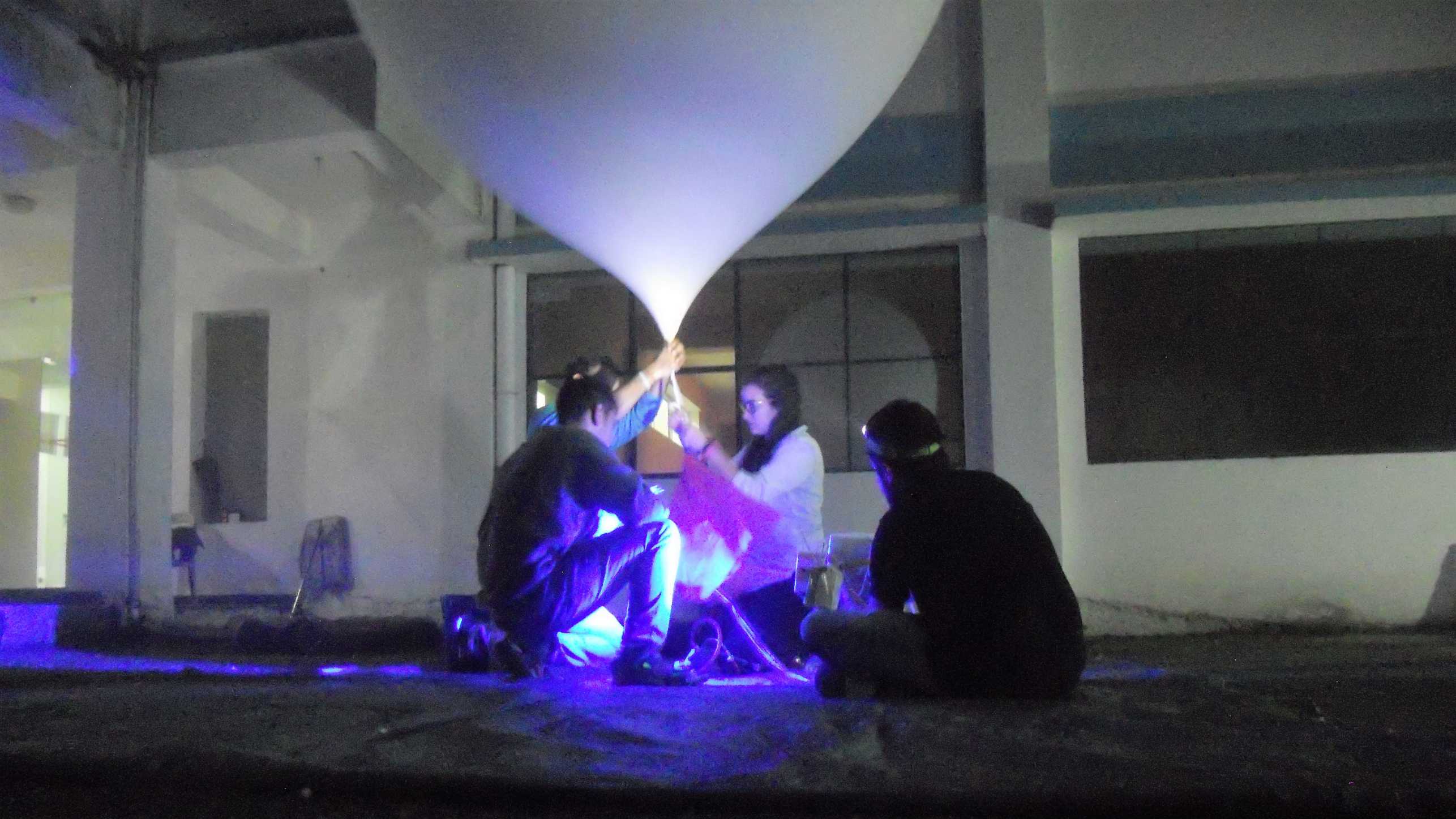Balloon Soundings
Childpage navigation
Compared to other approaches – such as satellite or aircraft measurement – balloon profiling permits sampling valuable atmospheric information up to about 30 km altitude into the lower stratosphere with limited technical requirements. Aside from the balloon with its related Helium gas filling, only a commercial radiosonde, a broadband radio receiver covering the 401 – 405 MHz frequency band dedicated to its transmission and a laptop are required. The external page iMet GPS Research Radiosonde provides a well-documented Download user interface (PDF, 116 KB) for external sensors. Data from the radiosonde and sensors hosted can be decoded, displayed and recorded with the freely available NOAA ESRL external page SkySonde software. The underlying protocol has been implemented as well by the external page Vaisala RS41 radiosonde such that in addition to dedicated installations for measurement campaigns, a large number of radio sounding stations worldwide is available to launch complementary sensors with the support of custom-made software plugins.
One science focus of our group lies on microphysical processes related to cirrus clouds and water vapor. In 2007, we have developed the Compact Backscatter AerosoL Detector (Download COBALD Datasheet (PDF, 142 KB)), which since 2008 has been deployed together with state of the art scientific water vapor sensors (Meteolabor external page Snow White, EnSci external page CFH, NOAA ESRL external page FPH, and FlashB) for more than 500 times from locations ranging from the deep tropics to high polar latitude (Deployment Overview). Data gathered from dedicated field campaigns or continuous monitoring flights, carried out in collaboration with partner institutions, have been used to constrain key parameters in microphysical models, and to provide a detailed description of the nucleation mechanisms and properties of cirrus clouds (Finished Projects).
Considering the significant uncertainties of the state-of-the-art balloon water vapor sensors in the tropopause region and above, the lack of investment in their improvement, and the recent political decision to ban HFC gases under the Montreal Protocol, we have started an in-house development of a Peltier Cooled Frost point Hygrometer (PCFH). First prototypes have been tested in the field. Currently design changes are being implemented and a new prototype will be tested in December 2018. We expect a standard working instrument by the middle of 2020.
Balloon Soundings Team:
Teresa Jorge, Beiping Luo, Yann Poltera, Thomas Peter, Marco Vecellio, Uwe Weers, Frank Wienhold
